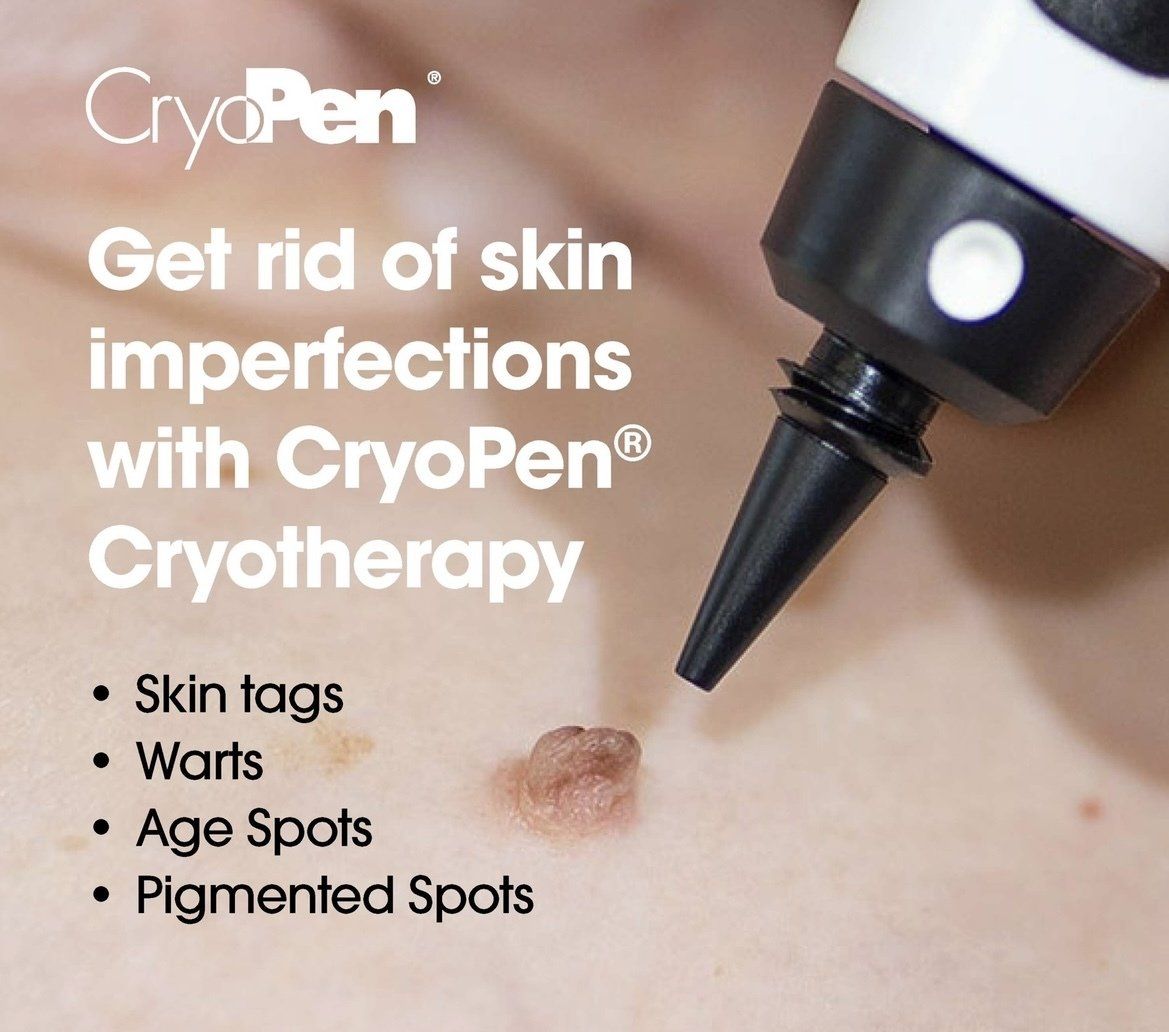CRYOTHERAPY
Cryotherapy is recognised as the benchmark in dermatology practice worldwide. The CryoPen® allows us to work with millimetre precision for removing all benign skin lesions with no more collateral damage to healthy tissue.
With quick and pain-free treatments, we can remove benign cosmetic lesions in a matter of seconds. These include:
* Skin tags
* Warts
* Benign Moles
* Solar lentigines (age and sun spots, liver spots)
* Verrucas
* Cherry angioma
* Seborrhoeic keratosisl
What is cryotherapy?
The term ‘cryotherapy’ literally means ‘treatment using low temperature’ and refers to the removal of skin lesions by freezing them. The most common product used by doctors is liquid nitrogen.
What is liquid nitrogen?
Liquid nitrogen is the liquid state of gaseous nitrogen, which occupies 78% of the air we breathe. Liquid nitrogen is extremely cold, having a boiling point of minus 196°c. It is necessary to store and transport it in special flasks.
What conditions can be treated with cryotherapy?
A wide variety of superficial benign (non-cancerous) lesions can be treated with cryotherapy, but it is most commonly used to remove actinic keratoses (an area of sun-damaged skin found predominantly on sun-exposed parts of the body), viral warts, seborrhoeic keratoses and other benign lesions.
A consultant will be required prior to all treatment to discuss treatments and management .
Although there is slight local pain felt, cryotherapy does not normally require a local anaesthetic, and the procedure itself lasts a matter of seconds; the precise time depends on the thickness and size of the lesion. The frozen skin becomes white and takes one to two minutes to thaw back to normal skin temperature. Your doctor may suggest that the process be repeated once the skin has thawed. After a few days, a scab will form, and this will take one to two weeks to fall off (occasionally a little longer, especially on the legs). Usually, the treated area will eventually look normal, although scarring and discolouration is possible, and rarely ulceration, particularly on the lower legs.
Depending on the nature of the lesion, more than one treatment may be necessary, and this is usually repeated at regular intervals.
How should the treated area be cared for?
Your doctor will explain how they would like you to care for the treated areas and may suggest applying Vaseline to the affected skin. If the scabs become wet, they should be patted dry with a soft towel or tissue.
It is important not to pick the scab as this will encourage scarring. A dressing or plaster is not usually necessary but may be advisable if the treated area is likely to be knocked or rubbed by clothing.
What are the side effects of this treatment?
Immediate side effects:
Pain - cryotherapy is usually well-tolerated but can sometimes be
painful if a deep freeze has been necessary. This discomfort can occur both at the time of treatment and for a variable time thereafter. Painkillers (such as paracetamol) taken for the first 24 hours may relieve the discomfort; also taking a painkiller an hour or so prior to the anticipated treatment may reduce the discomfort.
Swelling and redness - this is a normal immediate response to freezing the skin and usually settles after two to three days. For a short while the treated area may ooze a little watery fluid. Cryotherapy close to the eyes may induce prominent puffiness of the lower eyelids which settles
within days.
Blistering - this is also a common consequence of cryotherapy and
blisters settle after a few days as the scab forms. Some people blister more easily than others and the development of blisters does not necessarily mean that the skin has been frozen too much. Occasionally the blisters may become filled with blood; this is harmless and should only be punctured if a blister is painful and very uncomfortable, using a sterile needle.
Infection - uncommonly, infection can occur, resulting in increased pain and the formation of pus: this may require topical antiseptic or antibiotic therapy from the doctor who performed the treatment or your GP.
Subsequent side effects:
Scarring - rarely, a scar will form, especially if a deep freeze has
been necessary (i.e. to treat a basal cell carcinoma).
Hypertropic/Keloid scarring – very rarely a raised scar can form following treatment with cryotherapy which appears as a rounded, hard growth on the skin. These are harmless lesions, more
common in dark skinned individuals compared to Caucasians.
Pigmentation changes - the skin at and around the treatment site may lighten or darken in colour, especially in dark-skinned people.
This usually improves with time but may be permanent.
Numbness - if a superficial nerve is frozen, it may result in numbness of the area of skin supplied by that nerve. Normal feeling
usually returns within a matter of months.
Treatment may not be effective, or the condition may recur
